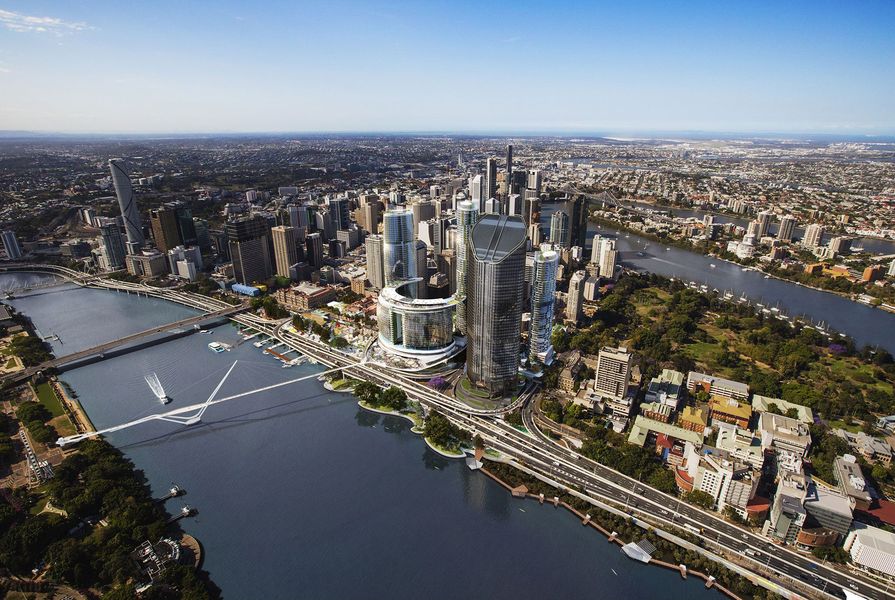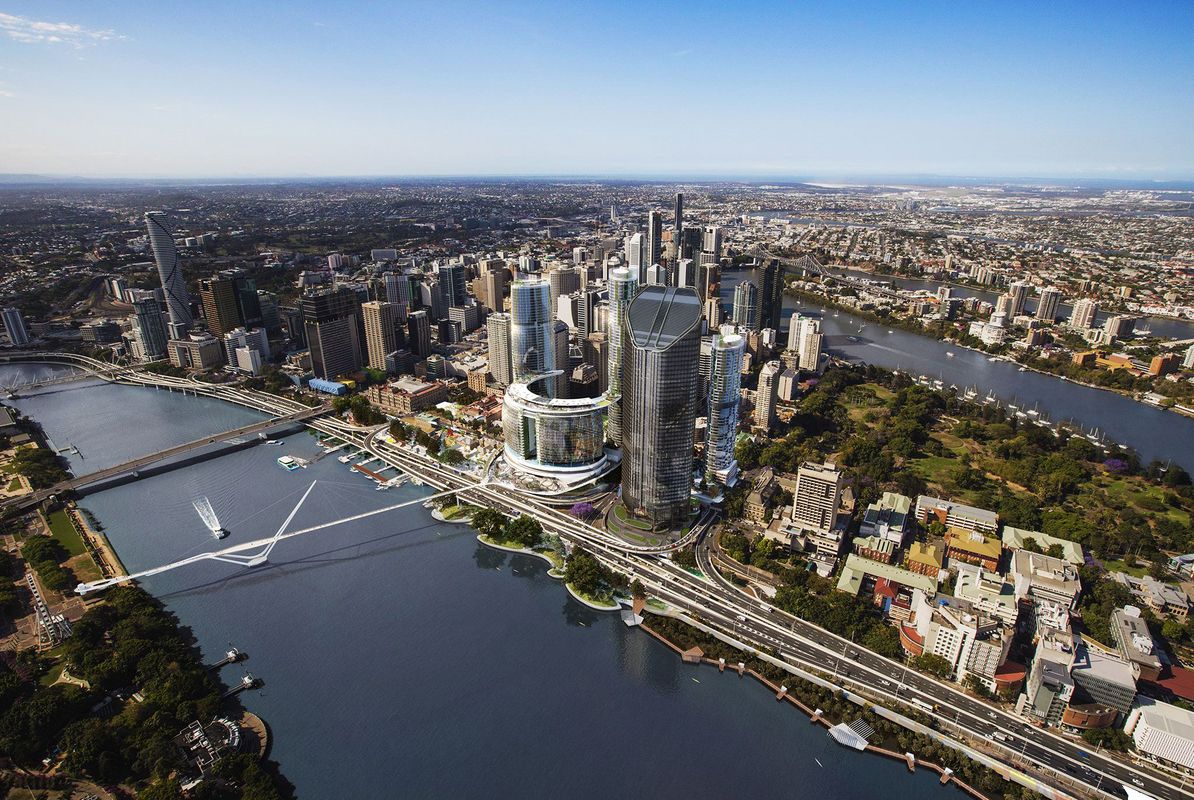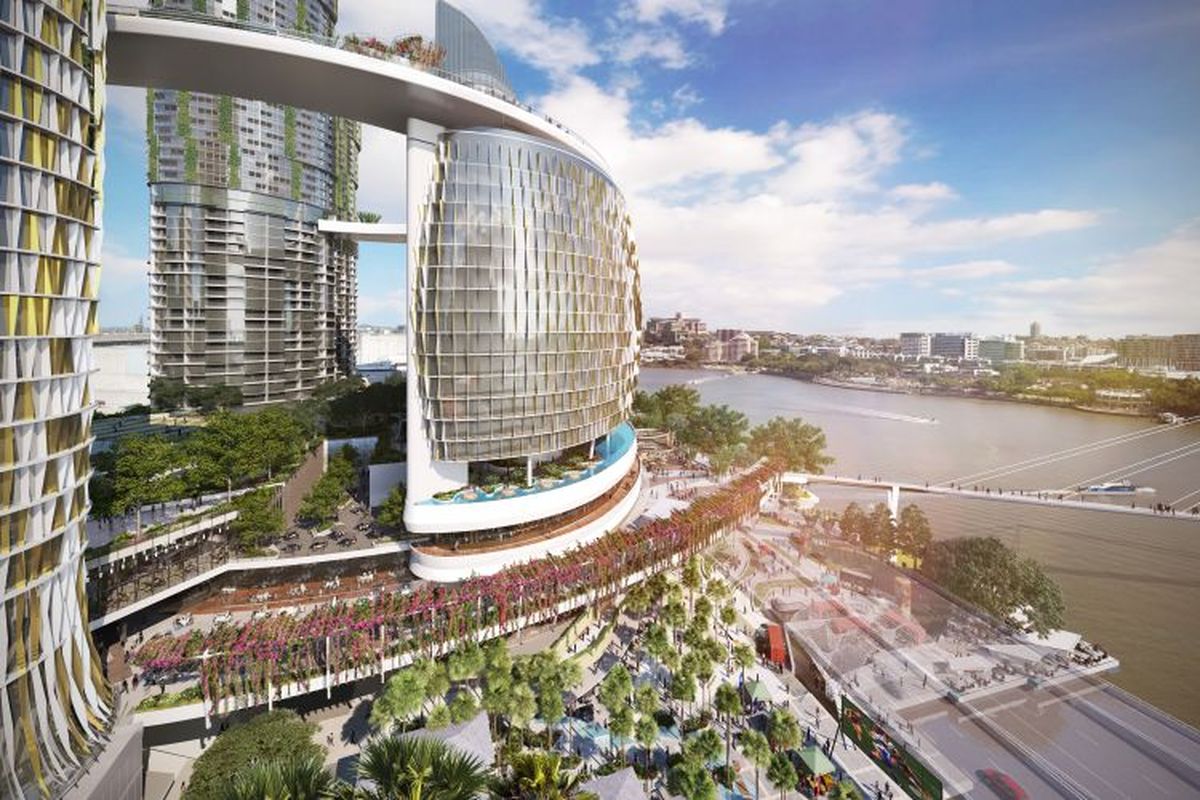There are big issues at stake for Queensland’s capital with the proposal for Queens Wharf. The scale of change afoot for Brisbane’s historic heart is transformative. In just a decade, the Government Precinct as we know it will be a mere memory, overwhelmed not just by the commanding tower underway at No 1 William Street, but also by much more – new bridges, residential, office and hotel towers and a casino across from the government buildings. The historic Treasury building will become a shopping mall. There will be riverside parks, new public spaces and streetscapes, a new lookout and a sky walk. That part of the city, between its vibrant commercial and shopping precincts and the home of Parliament, the City Gardens and Queensland University of Technology at Gardens Point, is to be completely transformed, and fast.
So, what’s not to like?
The issues are less about the idea of change itself and more about location, scale and delivery – esoteric concepts, perhaps – but fundamental to building a great city. These professionals know how great cities (and bad ones) are made for their community and this proposal has got them ringing alarm bells.
First, why here? This is the state’s historic heart, with traditional streetscapes and buildings of national significance. In built form, the precinct tells the story of Queensland’s government – its aspirations and its failures as the seat of serious business. Yet now, such business is to be carried out in a “casino resort,” with its additional 7,000 cars. Is that appropriate? In the cities Brisbane competes with globally as a “world city” , the idea of the precinct rules. Comprehensible at a human scale, precincts help us make sense of our vast contemporary conurbations. Identifiable government precincts occur in Melbourne and Sydney, both cities with casinos, shopping precincts and hotels, diversity and excitement. In these cities, however, it is recognized that there are appropriate locations for each.
The fundamental problem is of juxtaposition. Just how close should government be to gambling or big business? And where in Queens Wharf are the civic places that signal government purpose, the public square or forecourts? There are none. What does that tell the citizens of Queensland and its visitors? That their place at the seat of government matters less than their place at gambling tables or shopping centres? In the business of city-making, locations matter and should make sense.
Second, if casinos and shops are to be built on this site, why so big? Development of this scale will overwhelm the historic fabric and erase parts of it, such as the streets that are fundamental to its story. Again, the cities against which Brisbane benchmarks itself keep their historic districts carefully, developing with rather than over them. Sydney’s The Rocks, Soho in Manhattan, London, Paris, Rome and even Shanghai are cases in point. It isn’t that such cities don’t develop and change, it is that they are selective about where and what, recognizing that size matters and can destroy rather than create ambience and variety. These city-makers want to see more care of their historic precincts and its places.
The state government argues that this scale of development enables more public assets to be protected and created – new streets, open spaces and buildings. But other cities redevelop their historic places without this scale of change. So what makes Brisbane so different? This question remains unanswered. The impact on the city’s historic places and CBD function during construction leads to the conclusion that if the city wants a new casino precinct, post-industrial sites such as Roma Street or Kurilpa are more suitable. Both need redevelopment but are less endowed with such history.
Third, how will the public interest be protected during such a rapid development process? Queen’s Wharf is a big project by any standards and very big for the timeframes proposed. Through the government, Queenslanders own and manage much of it – roads, streets, open spaces, services and buildings. They should know how this development would be a good investment for the state and that their public assets really will be improved. Such a rapid rollout, using an as yet unclear delivery process, cannot but help make experienced urban professionals nervous. How will the public interest be protected? Will the streets, open spaces and riverfronts be managed by government as public assets and how is the quality of the outcome guaranteed under a radically new, untested delivery model? What happens if a project partner walks away or wants to? It happens. Will there be a specialist delivery authority with a mandate to deliver and report on publicly defined outcomes and if not, why not? A lot may be happening on that front but little is being revealed to give heart. On questions of quality, we are simply told that everything will be designed by world-class designers without change to the committed design. But we know that with projects of this scale, variations are inevitable and that it is not the designers who fail to deliver or succeed, it is how the process is managed. Barangaroo in Sydney and Docklands in Melbourne are cases in point.
So the questions around Queen’s Wharf remain. Queensland’s professionals are keen to see positive changes to their cities and towns, especially their historic hearts. They want them to be of world quality and know that achieving that requires care and expertise across many fronts. Whether and how that quality will be delivered at Queen’s Wharf remains their concern.

















